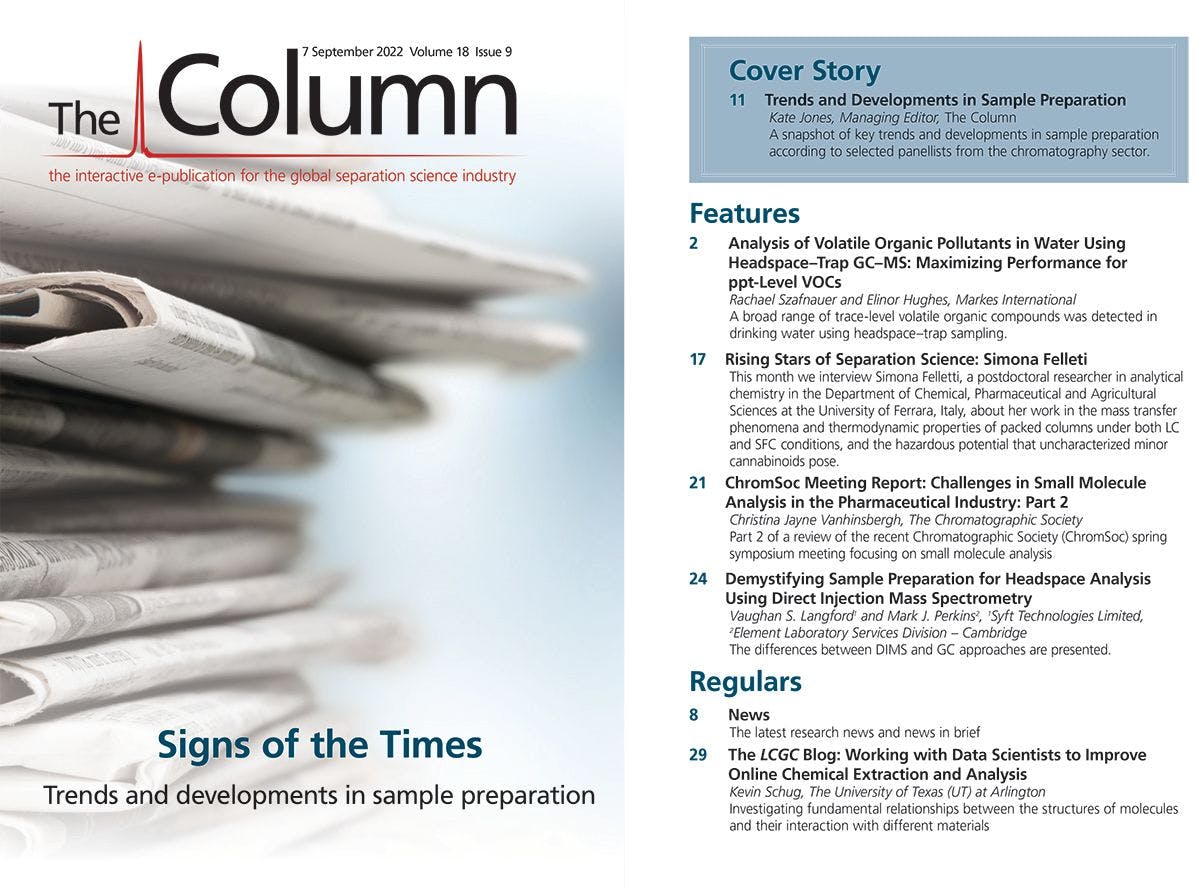Trends and Developments in Sample Preparation
A snapshot of key trends and developments in sample preparation according to selected panellists from the chromatography sector.
Q. What trends do you see emerging in sample preparation?
Dirk Hansen: We see multiple and diverse trends in sample preparation. On the one hand, next‑generation mass spectrometry (MS) detectors allow for the analysis of low concentrated samples without prior enrichment, but on the other hand, regulatory agencies continuously ask for lower detection and quantification limits, putting more pressure on the laboratory scientists for results. Due to these trends, we see more solutions, such as protein precipitation and phospholipid removal, being developed for a quick removal of matrix components to achieve a level of cleanliness in the sample with good recovery and relatively simple procedure. Other trends we are seeing are more sophisticated sample preparation like multi‑layer solid-phase extraction (SPE), automation of the extractions, and integration of the sample preparation to the analytical workflow in the case of online SPE or two-dimensional liquid chromatography (2D-LC) in combination with MS detection.
Oliver Lerch: I am frequently in contact with customers from industry and academia working to meet their needs. All of this feeds into our perspective on requirements and future developments. I am also specifically involved in automating sample prep processes.
In the last sample preparation technology forum (1), I “complained” that users stick to tried and trusted products and concepts, mainly relying on manual sample preparation. This seems to have changed since then. Companies are investing in automation for sample preparation, starting with simple yet effective things like preparing standards based on liquid handling, agitation, as well as vial de-capping and capping steps. The idea of automating sample preparation has clearly arrived in laboratories throughout the world in all application areas and markets. For users it is beneficial to rely on an automation platform on which they can start with basic workflows and extend functionalities over time as new challenges arise.
In that context, downscaling is often needed to enable automation. Standard operating procedures (SOPs) were until recently frequently written around manual sample processing and therefore employed large amounts of sample, solvents, and reagents. Automation and downscaling help to cut cost for chemicals, including for their safe disposal. In addition, automation reduces the exposure of laboratory personnel to hazardous substances. A greener and more cost-efficient chemical analysis is the result. A recently developed method for the determination of perfluoroalkyl and polyfluoroalkyl substances (PFAS) in water also profits analytically from smaller sample vessels because these can be efficiently flushed with limited amounts of solvent and the rinse effluent added to the SPE step, eliminating loss by adsorption on surfaces.
Ritesh Pandya: As more high-throughput laboratories tend to employ automation for sample cleanup, miniaturization of the starting sample and corresponding solvent volumes has become possible. Coupling various instruments used in sample preparation has gained popularity because it adds convenience to the overall user experience. A good example would be processing samples on well plates using a liquid handler combined with a manifold. Products that allow routine complex workflows to be simplified without sacrificing analyte recoveries are also attracting analysts from all industries.
Filtration columns and tips with certain chemistries allow for a reduction in the number of steps while removing matrix components to an acceptable level.
Also, with an increase in the legalization of marijuana for recreational and medical use, demand for extracting and separating tetrahydrocannabinol (THC) isomers from challenging matrices has been on the rise. To better understand the impact of PFAS toxicity on the environment and human health, more emphasis than ever is being put on analyzing PFAS in various water and food samples.
Elia Psillakis: In my opinion, more and more analysts engage towards a greener and more sustainable future for sample preparation. “Going green” in sample preparation is not a trend; it is a necessity. Current global challenges and stressors highlight the urgency at which sustainability issues must be addressed. Going in this direction, the application of environmentally benign sample preparation methods should be a priority for all researchers, practitioners, and routine analysts for the benefit of the environment, human health, and society. Green sample preparation is sample preparation. It is not a new subdiscipline of sample preparation but a guiding principle towards sustainability.
Q. In your opinion, what is the future of sample preparation?
Dirk Hansen: With a focus on sustainability across the globe, we expect further miniaturization and reduced environmental impact (solvent consumption) as some of the main drivers for new developments in sample preparation solutions. In addition, we believe that in the clinical diagnostics space, there will be a greater number of LC–MS/MS methods replacing classical immunoassays. Based on this assumption, we expect a larger need for easily automatable sample preparation solutions for some of these assays.
Oliver Lerch: Sample preparation will remain important for the foreseeable future. For many matrices, sample preparation is indispensable. A colleague of mine likes to point out that “an LC–MS system has no door through which the lettuce can be introduced for pesticide analysis”. That is why we need sample prep! For other applications, sample preparation makes sense as well because we need to ensure that we arrive at accurate results using rugged analysis methods while continuing to have long maintenance intervals and high throughput.
Two years ago, I described the seamless integration of different manufacturers’ instruments into one software control platform as a trend. In this matter, having been overly optimistic, I have to correct myself. We are at the early stages of such a development, in which “all” laboratory equipment will be integrated into one control software connected to a laboratory information management system (LIMS) using generic interface standards. This setup will eventually allow us to generate comprehensive automated workflows with robots that fetch samples from the refrigerator before transferring them to a sample preparation platform and finally on to the analysis system. Alternatively, workflows with human intervention, such as a manually executed weighing step, are possible. The analysis results are finally transferred to the LIMS. Today, customers are requesting interaction and synchronization between instrument control software and LIMS. For example, vials can simply be placed in the autosampler tray, the barcode scanned, the sample ID established, and the correct analysis method and sequence table set up and executed automatically.
Ritesh Pandya: Advances in automation appear to guide the future of sample preparation. SPE products that are compatible with various components integrated into an all‑in‑one workstation will significantly maximize productivity. Liquid handlers ensure consistent and accurate pipetting of extremely small volumes, overcoming critical errors that would be introduced when using a manual approach. Apart from saving time, the robots minimize the risk of exposure to chemicals on a daily basis and drastically reduce solvent consumption, contributing to a cost-effective method set-up. Treating all the samples the same way without many variations leads to reliable results and excellent reproducibility. The ability to modify the extraction procedures stored on the software is another favourable feature of automation.
Elia Psillakis: Sample preparation will continue to grow in importance, with sustainability issues guiding future trends in speed, automation, energy, materials, chemicals, and size. Meanwhile, cooperation and coordination with national and international standardization bodies will be established with the aim of replacing hazardous official standard sample preparation methods with green high‑performers. Sample preparation will most likely become increasingly interdisciplinary to promote problem‑driven research and address the world’s increasingly complex and interconnected problems. Tearing down disciplinary walls will also facilitate knowledge transfer from other “distant” disciplines and increase our understanding of the fundamentals underlying sample preparation. We should also expect breakthroughs in low‑cost, robust, and networked sensors for remote all-in-one sampling, sample preparation, and analysis. This foreseen rise in remote analysis could also lead to the much‑discussed fusion with big data and artificial intelligence (AI), creating miraculous benefits.
Q. What obstacles do you think stand in the way of sample preparation development?
Dirk Hansen: There is a tendency to avoid sample preparation by using more sensitive detectors. This is driven by the fact that in many cases sample preparation is still a manual process and requires a thorough method development and method validation. Even with advances to the detectors, sample preparation is a vital step that needs to be performed by experienced laboratory scientists to ensure reliability and to provide accurate results.
Oliver Lerch: Many companies develop and manufacture innovative sample preparation equipment. Nevertheless, the majority of the “big” gas chromatography (GC)–MS and LC–MS instrument manufacturers have less focus on sample preparation, preferring to market (high-end) mass spectrometers and to omit sample preparation wherever possible, using a “dilute-and-shoot” or direct injection approach. This strategy may lead to less robust analysis methods and an increased need for instrument maintenance, leading to instrument downtime. A closer collaboration between instrument manufacturers and sample preparation equipment manufacturers could benefit all parties because customers today are asking more and more frequently for comprehensive solutions from the sample as received to the final analysis result.
Ritesh Pandya: Highly sensitive modern analytical instruments leave no room for residual contamination that would have usually gone under the radar. It becomes tremendously vital for the companies to closely monitor the manufacturing process and for the laboratories to ensure a contamination-free environment with no carryover issues. While some matrices are exceptionally difficult to work with, more realistic expectations need to be held, especially when it comes to achieving high recoveries and minimal matrix effects for a large panel comprised of analytes with varying chemistries.
Elia Psillakis: The biggest obstacle to sample preparation is the weak connection between academia and the private sector. Research in sample preparation is blooming but perhaps left unnoticed by outsiders. We have not been effective enough at projecting these advances and have acquired the image of a slow‑paced discipline developing laborious and time‑consuming procedures. The lack of a coherent strategy to promote the criticality and benefits of modern sample preparation technologies has resulted in many official standard methods still relying on old-fashioned and hazardous analytical procedures. Newer, more powerful, and greener sample preparation methods are ignored in favour of more traditional and standard approaches, which may not fully address the analytical challenge at hand. Private and industrial laboratories see new and green sample preparation alternatives as an extra burden, rather than an opportunity to adopt powerful techniques that have a shared value for both the productivity and society. Strengthening the interface between academia and the private sector is an obstacle that has to be overcome, and this is a major task of the EuChemS-DAC Study Group and Network Force, which I have the honour of leading.
Q. What one recent development in the area of sample preparation would you say is the most important?
Dirk Hansen: The biopharmaceutical market has consistently had strong growth for the past couple of years, especially with the global distribution of the COVID-19 vaccine. Biopharma laboratories need to be able to consistently clean up their biological samples without losing their sample while also maintaining high recovery. By using, for example, a magnetic bead as a reproducible sample preparation option, this addresses both those needs, but can add a lengthy amount of time to the workflow.
Oliver Lerch: I do not see one single most important development in particular in techniques or applications. The quest for greener analysis and greener sample preparation techniques seems to be gathering momentum. The good news is that there is progress in that area in terms of underlying concepts as well. In that context I would like to recommend the article “The Ten Principles of Green Sample Preparation” in Trends in Analytical Chemistry by Angela I. López‑Lorente et al. (2), in which 10 fundamental principles are described that the sample preparation of the future should stick to. The authors plan to develop metrics for assessing “greenness” of sample preparation steps. Further, the IUPAC project “Greenness of official standard sample preparation methods” is guaranteed to become recommended reading (3).
Ritesh Pandya: The recently developed QuEChERSER Mega-Method is an upgrade over the regular QuEChERS (quick, easy, cheap, effective, rugged, and safe) procedure, as it covers analytes within a broader polarity range. This new approach seems to be a significant development and eliminates the need for using separate methods to analyze pesticides, veterinary drugs, environmental contaminants, and mycotoxins in food.
Elia Psillakis: Early sample preparation methods were a major source of the total negative impact of analytical methodologies on the environment, mainly due to the large energy demands and quantities of hazardous substances used and generated. For this reason, the first of the 12 Green Analytical Chemistry (GAC) principles suggested applying direct analytical techniques to avoid sample preparation. The first principle of GAC was commonly misinterpreted and created the false impression that omitting the sample preparation step was a green approach, fully neglecting the “green” technological advances in the field. The “exclusion” of sample preparation from GAC also created a gap, as removing this step was practically impossible for complex samples and when high sensitivity is needed.
I think that the most important recent development was the formulation of the 10 principles of green sample preparation and the introduction of AGREEprep, the first metric tool focusing on sample preparation. Defining sample preparation within the context of green chemistry and GAC was a great necessity in the area of sample preparation. We now have the approach formulated in hand and a metric to evaluate the environmental impact of methods. Currently, decisions about methods are based on method performance and price. Thanks to these developments, they can now be complemented by a sustainability factor, which is a measure of how green the method is.
Q. What was the biggest accomplishment or news in 2021/2022 for sample preparation?
Dirk Hansen: The development of products that are able to solve multiple problems in one extraction for scientists—combining two different sorbents or products to help create a faster solution.
Oliver Lerch: The sample preparation community is increasingly organized; for example, the “Sample Preparation Study Group and Network” was installed in the Division of Analytical Chemistry of the European Chemical Society in 2020. This group held European Sample Preparation e-Conferences in 2021 and 2022, and this year the conference was even accompanied by the 1st Green and Sustainable Analytical Chemistry e-Conference. Moreover, Advances in Sample Preparation, a dedicated open-access scientific journal, was established in 2021. This shows that the community is active and is receiving more and more attention in the analytical chemistry world. These are the big accomplishments of the last two years.
Ritesh Pandya: EPA 1633 draft method for the analysis of 40 PFAS in non-drinking water matrices was a piece of important news this year. The sample cleanup is accomplished using weak anion exchange (WAX) and graphitized carbon black (GCB) in powder or cartridge format.
Elia Psillakis: In my opinion, 2021–2022 was a landmark year for sample preparation, as this was the launch year of Elsevier’s open access journal Advances in Sample Preparation (SAMPRE). SAMPRE was the first academic journal dedicated to sample preparation. The launch of this new journal is of particular importance to our scientific community, as it recognizes the extraordinary technological and scientific growth in the area. For many years, senior members of our community were proposing the creation of this journal but major publishers could not identify the niche to fill. At that time the growth was not sufficiently large and new papers could be absorbed into existing journals. The launch of SAMPRE formalized sample preparation as a discipline and illuminated the dynamics, importance, and impact of the field.
References
- O. Lerch, The Column 16(12), 18–22 (2020).
- A.I. López-Lorente et al., TrAC Trends in Analytical Chemistry 148, 116530 (2022).
- https://iupac.org/project/2021-015-2-500/
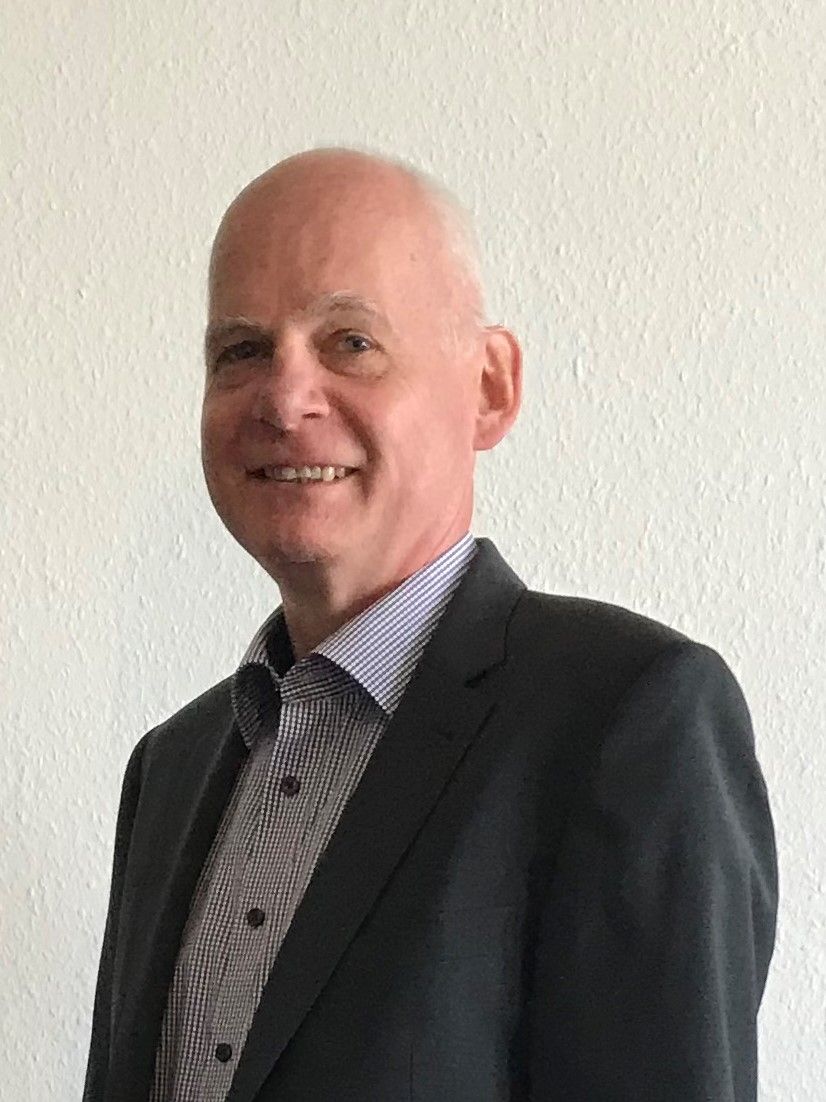
Dirk Hansen is Regional Market Development Manager, Europe at Phenomenex.
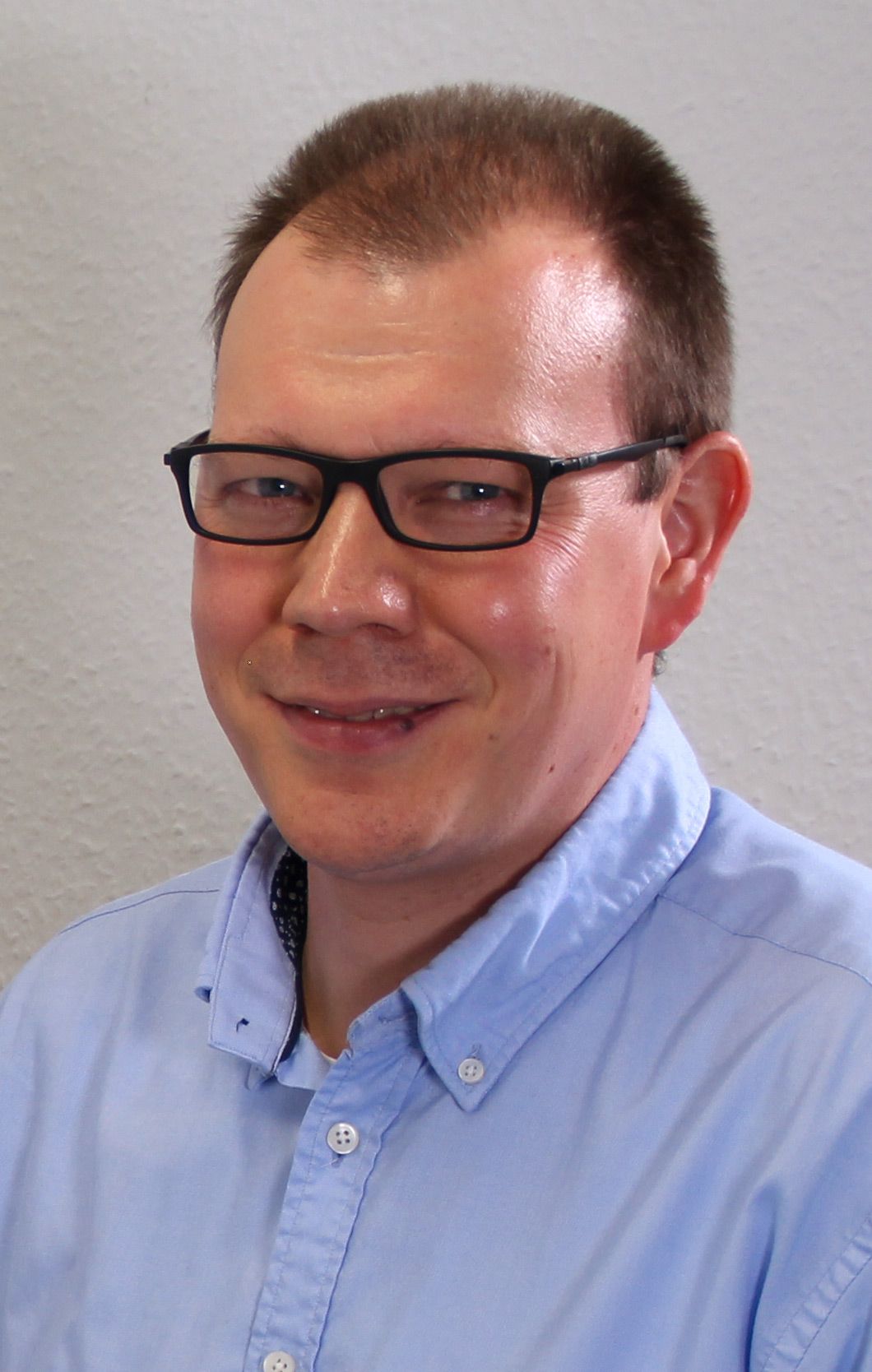
Oliver Lerch is Head of Automated Sample Preparation at Gerstel GmbH & Co. KG in Mülheim, Germany.
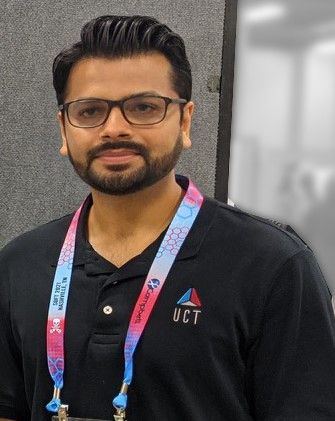
Ritesh Pandya is Technical Specialist at UCT.
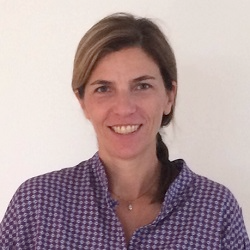
Elia Psillakis is a professor in the School of Chemical and Environmental Engineering, Technical University of Crete.
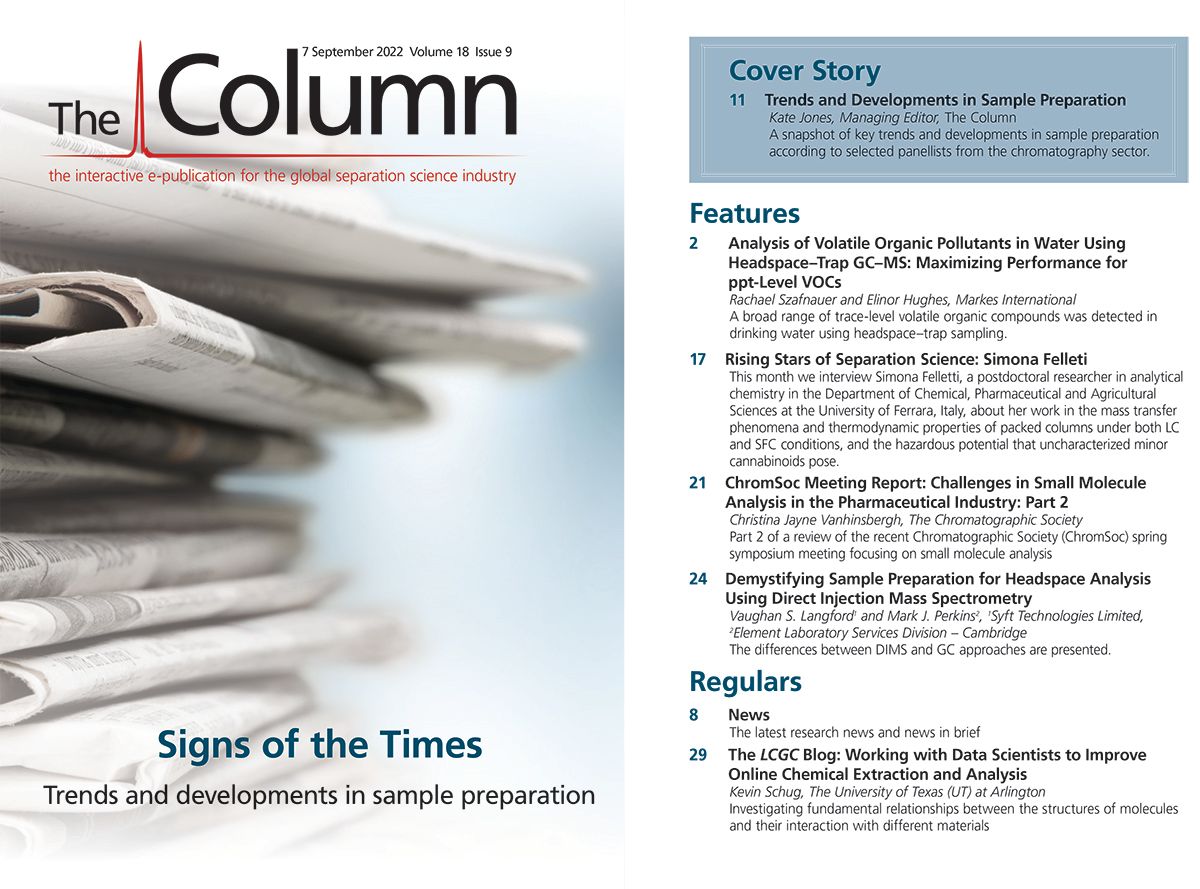
Thermodynamic Insights into Organic Solvent Extraction for Chemical Analysis of Medical Devices
April 16th 2025A new study, published by a researcher from Chemical Characterization Solutions in Minnesota, explored a new approach for sample preparation for the chemical characterization of medical devices.

.png&w=3840&q=75)

.png&w=3840&q=75)



.png&w=3840&q=75)



.png&w=3840&q=75)










